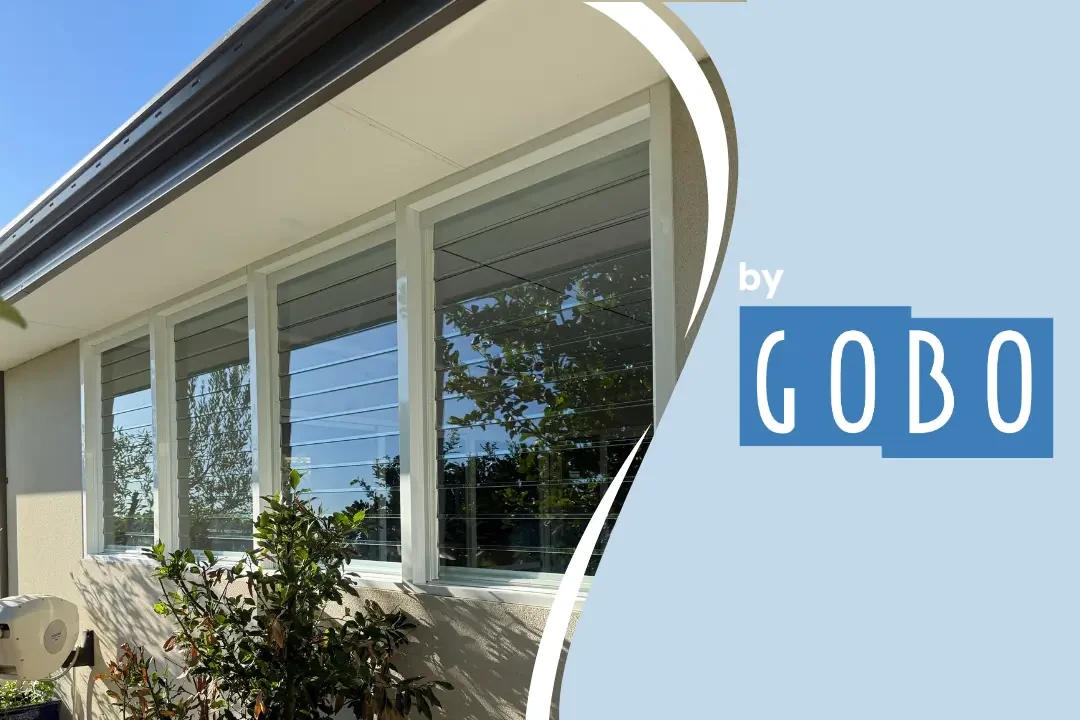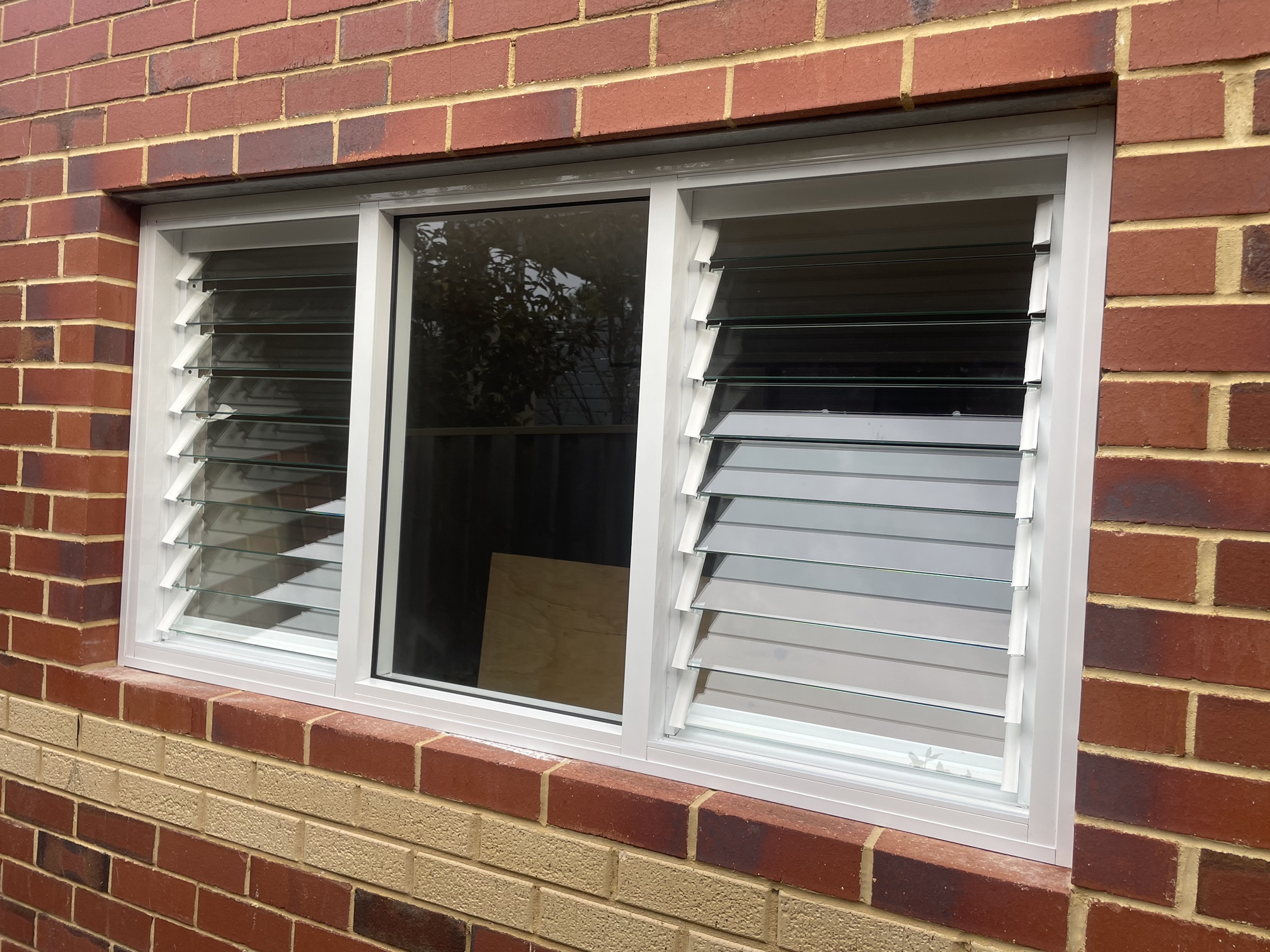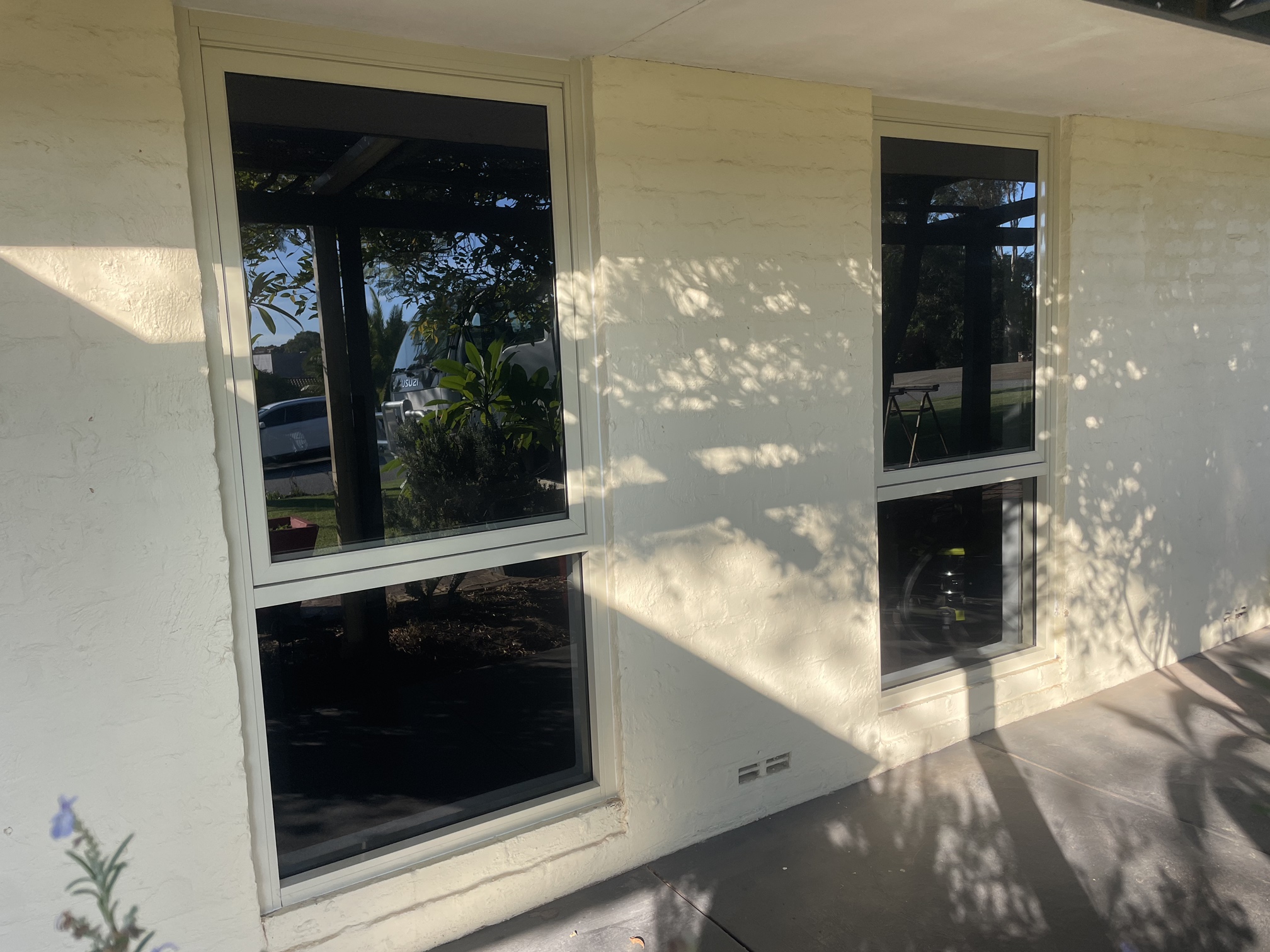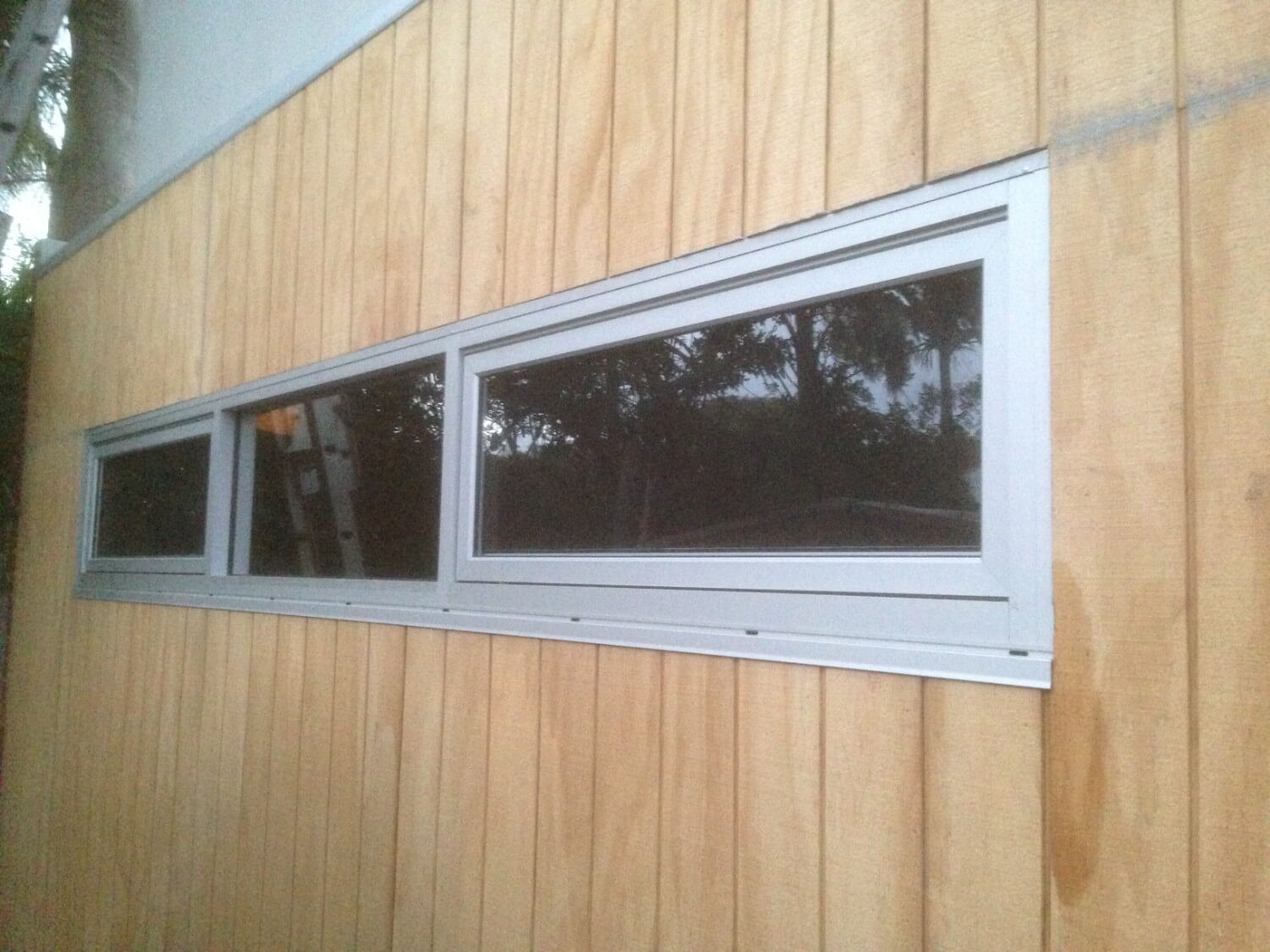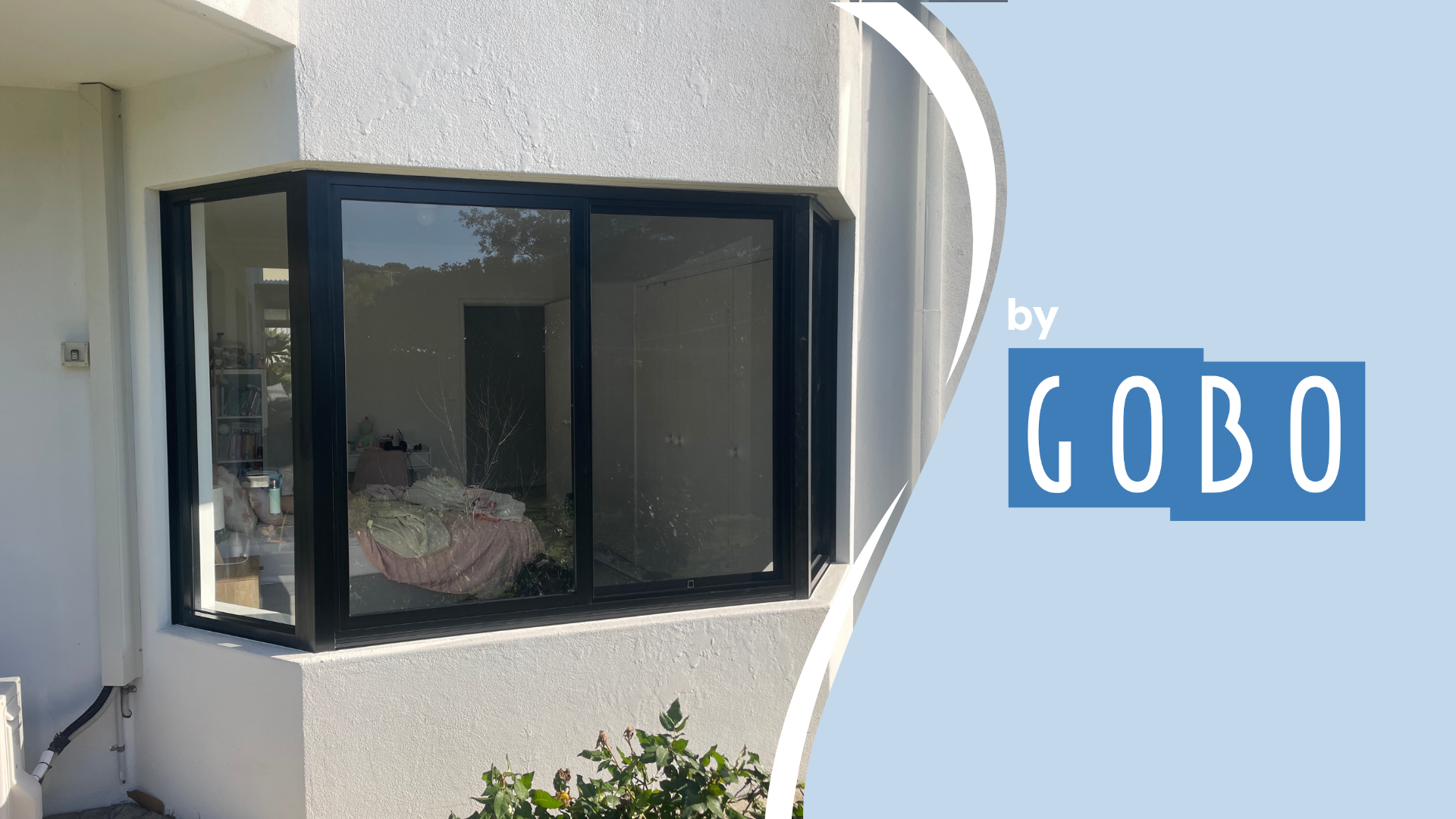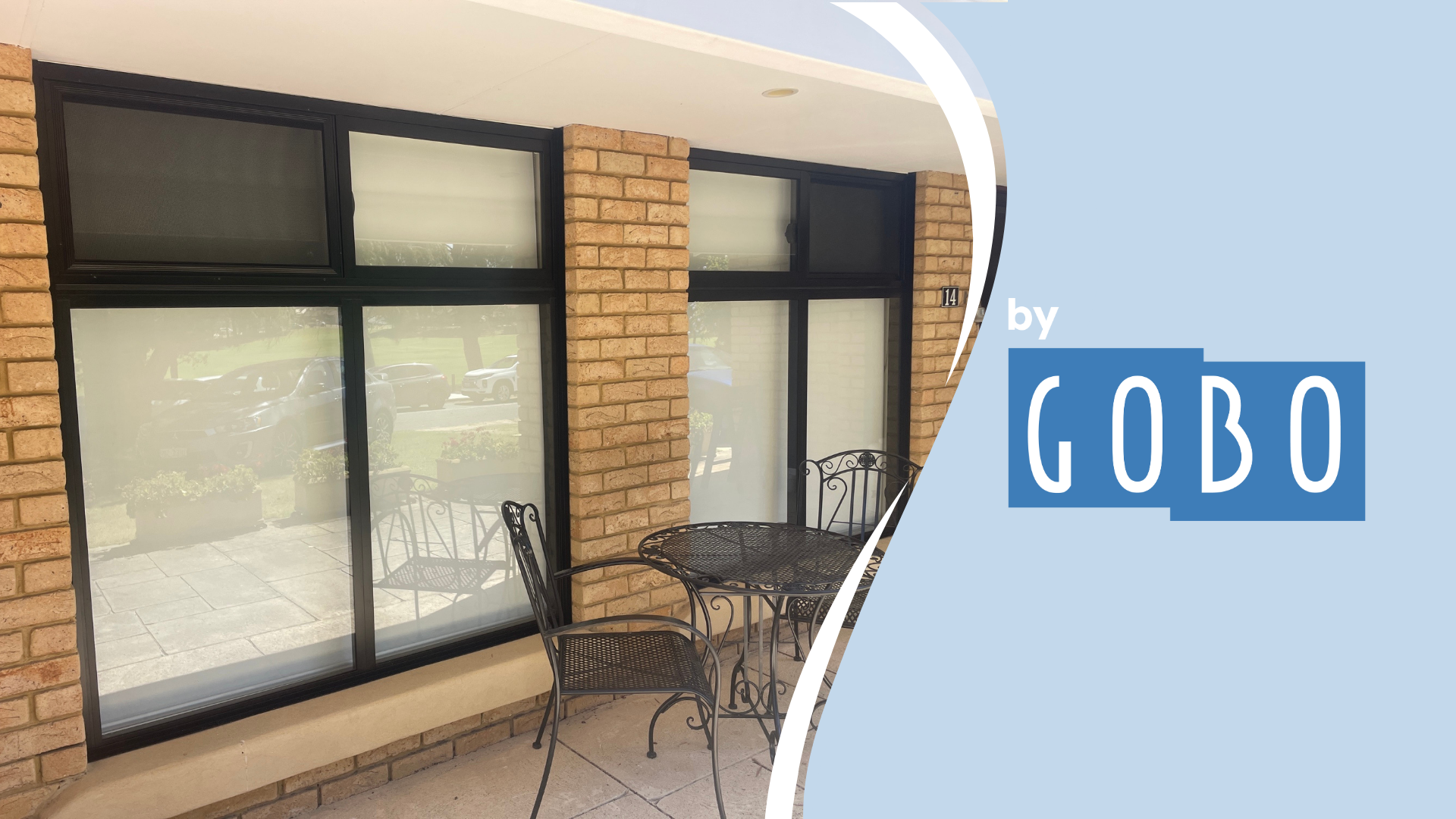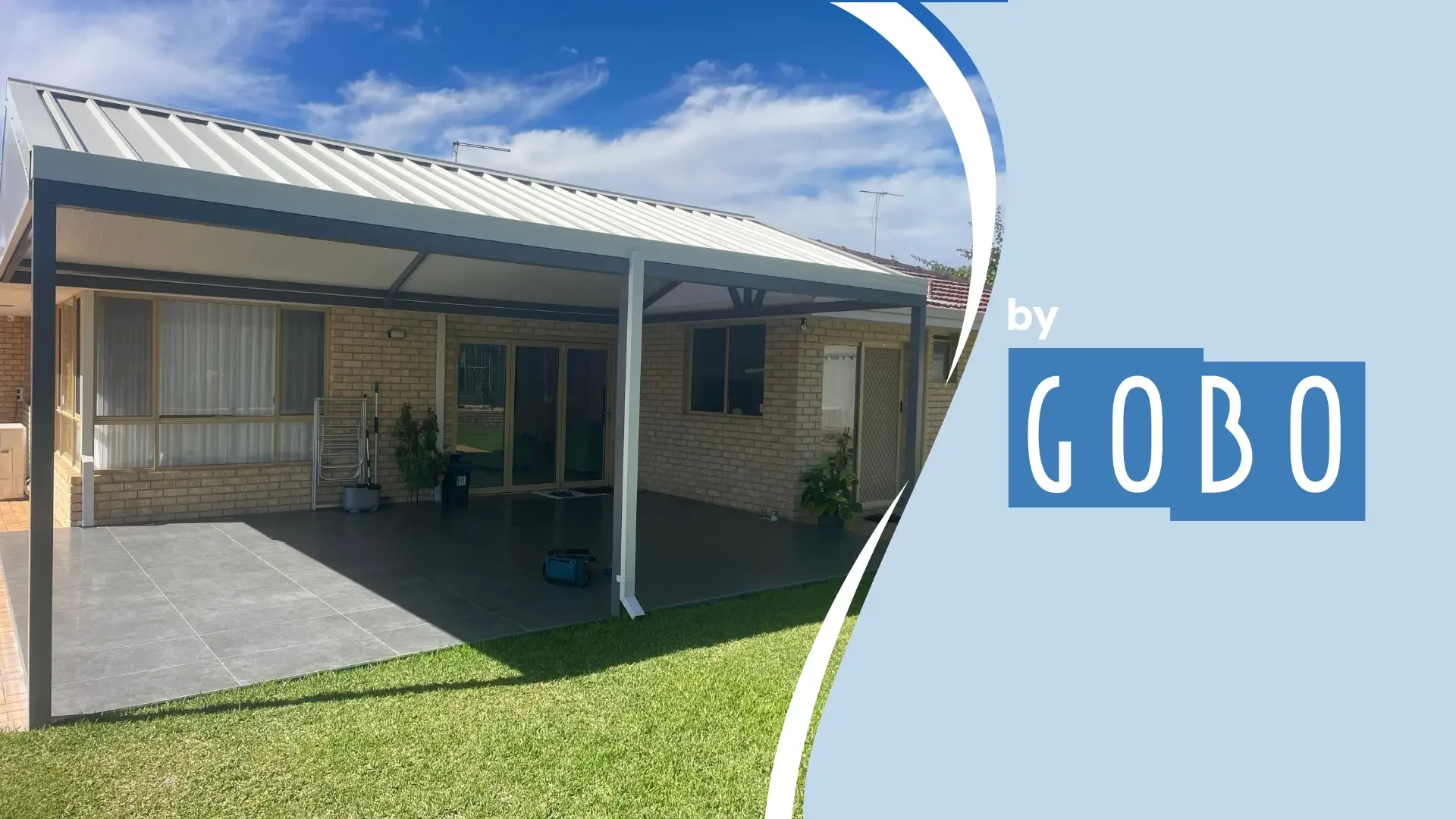Louvre vs Awning Windows: Ventilation & Weather Compared
When choosing windows for your home, two popular styles stand out: louvre windows and awning windows. Both
offer unique benefits, but the best choice depends on your lifestyle, climate, and design goals.
This guide compares louvre vs awning windows across ventilation, weather performance, style, and practicality, helping you decide which is
right for your space.
What Are Louvre Windows?
Louvre windows feature horizontal blades, usually glass, aluminium, or timber, that can be tilted open or closed in unison. A simple handle
or automated system allows you to angle the blades for full control over airflow and light.
- Maximum airflow: blades open almost fully, letting fresh air move freely.
- Flexible design: blades can be glass for views, aluminium for privacy, or timber for warmth.
- Modern style: slim frames and adjustable blades create a sleek, contemporary look.
Learn more about our full range of louvre windows.
' transform%3D'scale(7.8)'%3E%3Cg transform%3D'translate(172 128) rotate(276) scale(75 92)'%3E%3Cpath fill%3D'%23e0f0f7' fill-opacity%3D'.6' d%3D'M-.5-.5h1v1h-1z' %2F%3E%3C%2Fg%3E%3Cg transform%3D'translate(105 83) rotate(277) scale(56.5 23.4)'%3E%3Cellipse fill%3D'%23000300' fill-opacity%3D'.7' cx%3D'0' cy%3D'0' rx%3D'1' ry%3D'1' %2F%3E%3C%2Fg%3E%3Cpath fill%3D'%23000201' fill-opacity%3D'.6' d%3D'M144 21h63v63H144z' %2F%3E%3Cpath fill%3D'%23f9ffff' fill-opacity%3D'.5' d%3D'M137 157 25 99l1 37z' %2F%3E%3Cg transform%3D'translate(214 74) rotate(96) scale(41.4 8.0)'%3E%3Cellipse fill%3D'%23eff6f8' fill-opacity%3D'.6' cx%3D'0' cy%3D'0' rx%3D'1' ry%3D'1' %2F%3E%3C%2Fg%3E%3Cpath fill%3D'%2300110e' fill-opacity%3D'.5' d%3D'M69.3 96l3.9-63.2-37.2 1.4L51 128.8z' %2F%3E%3Cpath fill%3D'%23d2d3cc' fill-opacity%3D'1' d%3D'M143.4 48.8 131.2 36.2l-2.7 58.4 11.9 34.7z' %2F%3E%3Cpath fill%3D'%23d5d5cc' fill-opacity%3D'.9' d%3D'M40.8 97.8 25.4 133.6l2.1-78.6 11.7-3.6z' %2F%3E%3C%2Fg%3E%3C%2Fsvg%3E)
What Are Awning Windows?
Awning windows are hinged at the top and open outward from the bottom, creating a sloped "awning" effect. They’re typically opened
with a winder handle, allowing you to set the opening to your preferred angle.
- Weather-friendly: their sloped design deflects rain while still letting in air.
- Safe and secure: can be left slightly open for ventilation even in light showers.
- Classic appeal: a timeless window style that suits most home designs.
Discover the benefits of our awning windows.
' transform%3D'scale(7.8)'%3E%3Cg transform%3D'translate(82 91) rotate(360) scale(32.0 80.1)'%3E%3Cellipse fill%3D'%2300080b' fill-opacity%3D'.7' cx%3D'0' cy%3D'0' rx%3D'1' ry%3D'1' %2F%3E%3C%2Fg%3E%3Cg transform%3D'translate(21 149) rotate(183) scale(31.8 115.3)'%3E%3Cellipse fill%3D'%23daddd2' fill-opacity%3D'.5' cx%3D'0' cy%3D'0' rx%3D'1' ry%3D'1' %2F%3E%3C%2Fg%3E%3Cpath fill%3D'%23000' fill-opacity%3D'.7' d%3D'M178 27h25v105H178z' %2F%3E%3Cpath fill%3D'%23ffffe4' fill-opacity%3D'.4' d%3D'M193 161l61-34L90 104z' %2F%3E%3Cpath fill%3D'%23000' fill-opacity%3D'.6' d%3D'M53 120h64v43H53z' %2F%3E%3Cg transform%3D'translate(84 180) rotate(69) scale(10.5 59.9)'%3E%3Cellipse fill%3D'%23f4edd5' fill-opacity%3D'.5' cx%3D'0' cy%3D'0' rx%3D'1' ry%3D'1' %2F%3E%3C%2Fg%3E%3Cg transform%3D'translate(143 93) rotate(168) scale(31.0 58.5)'%3E%3Cellipse fill%3D'%23ffffde' fill-opacity%3D'.3' cx%3D'0' cy%3D'0' rx%3D'1' ry%3D'1' %2F%3E%3C%2Fg%3E%3Cpath fill%3D'%230e1211' fill-opacity%3D'.9' d%3D'M112 51.9l-1.8-32.2L49.4 53.6 45 10.3z' %2F%3E%3C%2Fg%3E%3C%2Fsvg%3E)
Ventilation: Louvre vs Awning Windows
Louvre Windows – Maximum Airflow
Louvres are unmatched when it comes to ventilation. Because the blades can open almost horizontally, they allow nearly 100% of the window
area to be used for airflow. This makes them ideal for:
- Hot climates where cross-ventilation is essential.
- Coastal homes that want to catch breezes.
- Living spaces that need quick cooling without air conditioning.
With louvres, you can also angle the blades to control the direction of the breeze, upwards towards the ceiling, downwards to the floor, or
directly into the room.
Awning Windows – Controlled Airflow
Awning windows provide more restricted ventilation. Since they open outward from the bottom, only part of the window area is available for
airflow. However, this design has its benefits:
- Even when it rains, you can keep them slightly open.
- Their smaller opening makes them more secure against intruders.
- They’re a great choice for bathrooms, laundries, and bedrooms where weather protection and privacy are priorities.
Ventilation Winner: Louvre Windows. If airflow is your main priority, louvres come out on top.
Weather Performance: Louvre vs Awning Windows
Louvre Windows – Best for Mild Climates
Modern louvres come with seals and drainage paths that improve weather resistance, but they aren’t as watertight as awning windows. In heavy
storms with wind-driven rain, water can sometimes find its way through the seals.
- Great in warmer, drier climates.
- Less effective in exposed, storm-prone locations.
- Can be paired with screens or overhangs for added protection.
Awning Windows – Excellent Rain Protection
Awning windows are designed for weather. Because the sash slopes outward, rain is deflected away from the glass and seals. This makes them
one of the best-performing windows in wet conditions.
- Can stay open in light to moderate rain.
- Stronger seals offer better insulation.
- Popular in coastal or storm-prone regions.
Weather Winner: Awning Windows. If rain protection is your top concern, awnings are the safer bet.
Louvre vs Awning Windows in Coastal Homes
Handling Salt and Sea Breezes
Perth’s coastal suburbs are exposed to the famous Fremantle Doctor sea breeze. Louvres are perfect for harnessing this
natural cooling effect, as their blades can open almost fully to let fresh air flow through your home. By angling the blades, you can direct
the breeze upwards to flush out hot air or downwards for a refreshing draft at living level.
Because coastal air carries salt and sand, it’s important to choose aluminium louvres with a quality powder-coated finish.
Regular cleaning every few months will help protect the frames from salt build-up and keep the blades working smoothly.
Protection from Coastal Storms
While the sea breeze is a perk of Perth summers, winters can bring strong cold fronts with heavy rain. In exposed coastal areas, awning
windows offer superior weather performance.
Their top-hinged sash acts as a shield, deflecting rainwater away even when the window is slightly open.
This makes awnings particularly practical for coastal homes that face frequent storms and strong winds off the Indian Ocean. Their tight
seals and sturdy design also add an extra layer of protection against water ingress, giving homeowners peace of mind during wild winter
weather.
Energy Efficiency: Louvre vs Awning Windows
-
Louvre Windows: When fully closed, modern designs seal well, but small gaps may reduce thermal efficiency compared to
awnings. Pairing with energy-efficient glass can offset this.
-
Awning Windows: Tighter sealing makes them better insulators, helping to reduce heating and cooling costs in
extreme climates.
Aesthetic Appeal: Choosing a Style That Fits Your Home
-
Louvre Windows: Ideal for contemporary or coastal homes. Their slim, horizontal lines create a sleek look, and the
ability to mix glass, timber, or aluminium blades adds versatility.
-
Awning Windows: Blend well with both modern and traditional architecture. They have a softer appearance and suit
homes that want timeless, functional design.
Security Considerations
-
Louvre Windows: Advances in design mean modern louvres are far more secure than older styles. Features like keyed
handles, security screens, and stronghold blade systems improve safety.
- Awning Windows: Naturally more secure thanks to their smaller opening and robust sash design.
' transform%3D'scale(5.8)'%3E%3Cpath fill%3D'%23181e25' fill-opacity%3D'.6' d%3D'M195 52l4 59-215-3z' %2F%3E%3Cg transform%3D'translate(167 0) rotate(166) scale(138.7 59.4)'%3E%3Cellipse fill%3D'%23fef4dd' fill-opacity%3D'.5' cx%3D'0' cy%3D'0' rx%3D'1' ry%3D'1' %2F%3E%3C%2Fg%3E%3Cg transform%3D'translate(32 134) rotate(456) scale(124 102)'%3E%3Cpath fill%3D'%233f3713' fill-opacity%3D'.4' d%3D'M-.5-.5h1v1h-1z' %2F%3E%3C%2Fg%3E%3Cg transform%3D'translate(204 103) rotate(215) scale(30.4 85.2)'%3E%3Cellipse fill%3D'%23fffffd' fill-opacity%3D'.3' cx%3D'0' cy%3D'0' rx%3D'1' ry%3D'1' %2F%3E%3C%2Fg%3E%3Cpath fill%3D'%23f1e9f1' fill-opacity%3D'.3' d%3D'M67 164l170-56L17 118z' %2F%3E%3Cpath fill%3D'%23dfffff' fill-opacity%3D'.5' d%3D'M198 33h14v106H198z' %2F%3E%3Cellipse fill%3D'%23a9b2bd' fill-opacity%3D'1' cx%3D'92' cy%3D'93' rx%3D'4' ry%3D'32' %2F%3E%3Cg transform%3D'translate(0 60) rotate(10) scale(17.9 160.8)'%3E%3Cellipse fill%3D'%23002d26' fill-opacity%3D'.3' cx%3D'0' cy%3D'0' rx%3D'1' ry%3D'1' %2F%3E%3C%2Fg%3E%3C%2Fg%3E%3C%2Fsvg%3E)
Maintenance Needs
-
Louvre Windows: Easy to clean because blades can be angled and accessed from indoors. Requires occasional lubrication of
moving parts.
Learn more about how to maintenance & clean louvre windows.
-
Awning Windows: Glass can be harder to reach for cleaning, especially on upper floors. Fewer moving parts mean less wear.
Which Window Should You Choose?
Choose Louvre Windows if…
- You live in a warm climate where airflow is a priority.
- You want modern, stylish windows with flexible design.
- Easy cleaning and indoor access are important to you.
Choose Awning Windows if…
- You live in a rainy or exposed area and need superior weather protection.
- You want a secure, low-maintenance option.
Louvre vs Awning Windows: Final Verdict
When it comes to louvre vs awning windows, there’s no single “best” choice, it all depends on your needs.
- For ventilation and modern design, louvre windows are unbeatable.
- For weather protection and affordability, awning windows take the lead.
The good news? Both styles can be integrated beautifully into your home design.
Ready to Choose the Right Windows for Your Home?
At By GOBO, we manufacture and install both louvre windows and awning windows designed for Australian
conditions. Whether you want the breezy, open feel of louvres or the secure, weather-ready benefits of awnings, we’ll help you find the
perfect solution.
Request a quote from By GOBO today and bring your home design to life with windows that suit your lifestyle.
Contact Us
Contact Us
Get
a free quote!
Get
a free quote!

